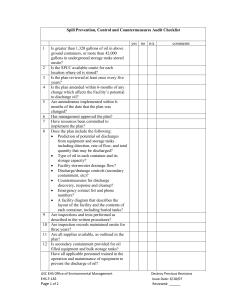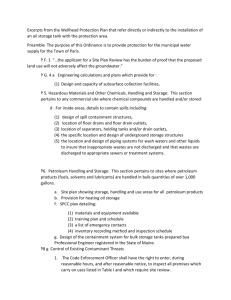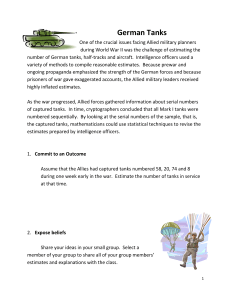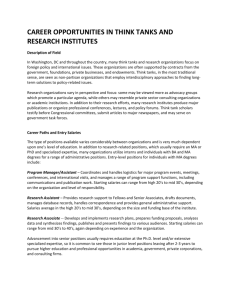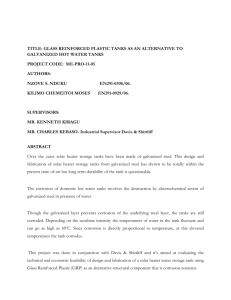2 ccr 404-1 practice and procedure 1
advertisement
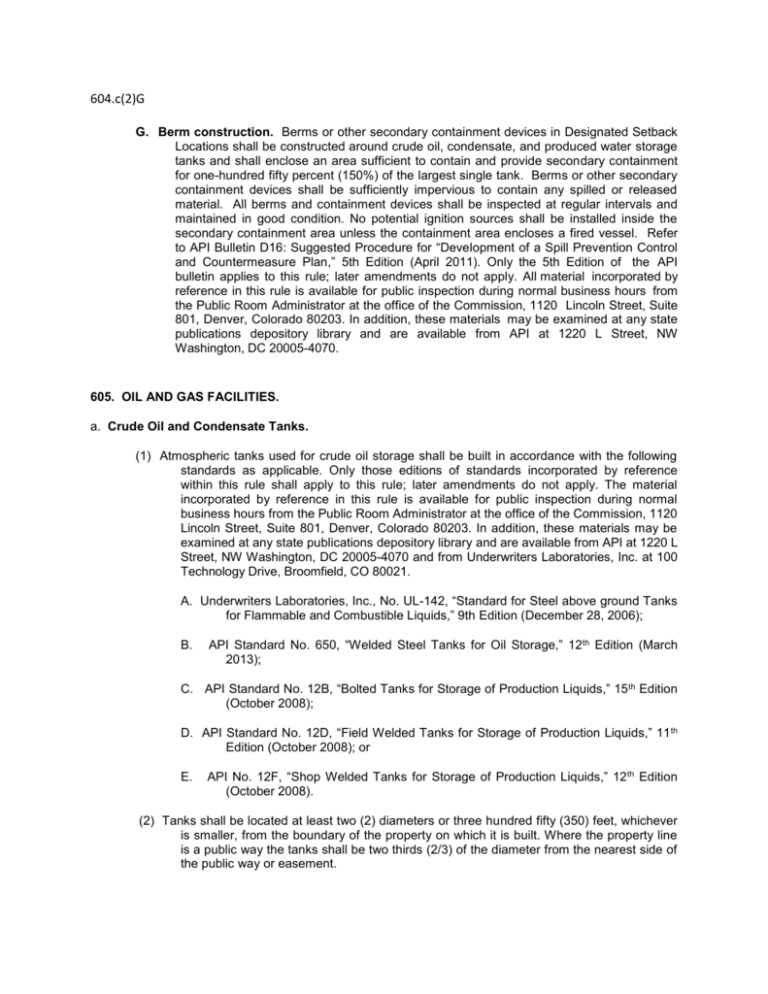
604.c(2)G G. Berm construction. Berms or other secondary containment devices in Designated Setback Locations shall be constructed around crude oil, condensate, and produced water storage tanks and shall enclose an area sufficient to contain and provide secondary containment for one-hundred fifty percent (150%) of the largest single tank. Berms or other secondary containment devices shall be sufficiently impervious to contain any spilled or released material. All berms and containment devices shall be inspected at regular intervals and maintained in good condition. No potential ignition sources shall be installed inside the secondary containment area unless the containment area encloses a fired vessel. Refer to API Bulletin D16: Suggested Procedure for “Development of a Spill Prevention Control and Countermeasure Plan,” 5th Edition (April 2011). Only the 5th Edition of the API bulletin applies to this rule; later amendments do not apply. All material incorporated by reference in this rule is available for public inspection during normal business hours from the Public Room Administrator at the office of the Commission, 1120 Lincoln Street, Suite 801, Denver, Colorado 80203. In addition, these materials may be examined at any state publications depository library and are available from API at 1220 L Street, NW Washington, DC 20005-4070. 605. OIL AND GAS FACILITIES. a. Crude Oil and Condensate Tanks. (1) Atmospheric tanks used for crude oil storage shall be built in accordance with the following standards as applicable. Only those editions of standards incorporated by reference within this rule shall apply to this rule; later amendments do not apply. The material incorporated by reference in this rule is available for public inspection during normal business hours from the Public Room Administrator at the office of the Commission, 1120 Lincoln Street, Suite 801, Denver, Colorado 80203. In addition, these materials may be examined at any state publications depository library and are available from API at 1220 L Street, NW Washington, DC 20005-4070 and from Underwriters Laboratories, Inc. at 100 Technology Drive, Broomfield, CO 80021. A. Underwriters Laboratories, Inc., No. UL-142, “Standard for Steel above ground Tanks for Flammable and Combustible Liquids,” 9th Edition (December 28, 2006); B. API Standard No. 650, “Welded Steel Tanks for Oil Storage,” 12 th Edition (March 2013); C. API Standard No. 12B, “Bolted Tanks for Storage of Production Liquids,” 15 th Edition (October 2008); D. API Standard No. 12D, “Field Welded Tanks for Storage of Production Liquids,” 11 th Edition (October 2008); or E. API No. 12F, “Shop Welded Tanks for Storage of Production Liquids,” 12 th Edition (October 2008). (2) Tanks shall be located at least two (2) diameters or three hundred fifty (350) feet, whichever is smaller, from the boundary of the property on which it is built. Where the property line is a public way the tanks shall be two thirds (2/3) of the diameter from the nearest side of the public way or easement. A. Tanks less than three thousand (3,000) barrels capacity shall be located at least three (3) feet apart. B. Tanks three thousand (3,000) or more barrels capacity shall be located at least onesixth (1/6) the sum of the diameters apart. When the diameter of one tank is less than one-half (1/2) the diameter of the adjacent tank, the tanks shall be located at least one-half (1/2) the diameter of the smaller tank apart. (3) At the time of installation, tanks shall be a minimum of two hundred (200) feet from any building. (4) Berms or other secondary containment devices shall be constructed around crude oil, condensate, and produced water tanks to provide secondary containment for the largest single tank and sufficient freeboard to contain precipitation. A synthetic or engineered liner shall be placed directly beneath each above-ground tank. Berms and secondary containment devices and all containment areas shall be sufficiently impervious to contain any spilled or released material. Berms and secondary containment devices shall be inspected at regular intervals and maintained in good condition. No potential ignition sources shall be installed inside the secondary containment area unless the containment area encloses a fired vessel. Any electrical equipment installations inside the bermed area shall comply with API RP 500: Recommended Practice for Classification of Locations for Electrical Installations at Petroleum Facilities classified as Class I, Division I and Division 2, 3rd Edition (January 2014) and the current national electrical code as adopted by the State of Colorado. Only the 3rd edition incorporated by reference within this rule shall apply to this rule; later amendments do not apply. The material incorporated by reference in this rule is available for public inspection during normal business hours from the Public Room Administrator at the office of the Commission, 1120 Lincoln Street, Suite 801, Denver, Colorado 80203. In addition, these materials may be examined at any state publications depository library and are available from API at 1220 L Street NW, Washington, DC 20005-4070 and from the Department of Regulatory Agencies, Colorado Electrical Board at 1560 Broadway, Suite 110, Denver, CO 80202. (5) Tanks shall be a minimum of seventy-five (75) feet from a fired vessel or heater-treater. (6) Tanks shall be a minimum of fifty (50) feet from a separator, well test unit, or other non-fired equipment. (7) Tanks shall be a minimum of seventy-five (75) feet from a compressor with a rating of 200 horsepower, or more. (8) Tanks shall be a minimum of seventy-five (75) feet from a wellhead. (9) Gauge hatches on atmospheric tanks used for crude oil storage shall be closed at all times when not in use. (10) Vent lines from individual tanks shall be joined and ultimate discharge shall be directed away from the loading racks and fired vessels in accord with API RP 12R-1, 5th Edition (August 1997, reaffirmed April 2, 2008). Only the 5th Edition of the API standard applies to this rule; later amendments do not apply. The API standard is available for public inspection during normal business hours from the Public Room Administrator at the office of the Commission, 1120 Lincoln Street, Suite 801, Denver, Colorado 80203. In addition, these materials may be examined at any state publication depository library. (11) During hot oil treatments on tanks containing thirty-five (35) degree or higher API gravity oil, hot oil units shall be located a minimum of one hundred (100) feet from any tank being serviced. (12) Labeling of tanks. All tanks and containers shall be labeled in accordance with Rule 210.d.
